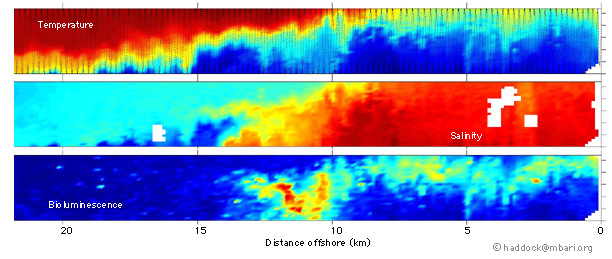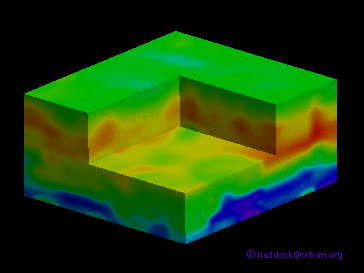| | M o d e l i n g a n d P r e d i c t i o n | |||
|
|
| |
[page in progress] The biomass surrogate Owing to the fact that a large fraction of marine organisms of widely distributed species are luminescent, biomass is often a good measure of the light emission potential of an oceanic region. An estimate of biomass is possible by satellite measurements of PAR (photosynthetically available light) and chlorophyll concentration in seawater. This is logical because these measurements lead to an estimate of total productivity of marine plants, principally dinoflagellates, and these are the base of the marine food chain, just as terrestrial plants are the basis of the terrestrial food chain from grazers upon plants through various levels of predation. The highest biomass values are found in coastal regions. This is because these regions are typically rich in plant nutrients from upwelling and, in some instances, from rivers or coastal rain runoff.
Return to the Bioluminescence Info Page. |
|
| | | | | ||
|
| Send comments to |
|||
| | |


 | Return to the
| Return to the